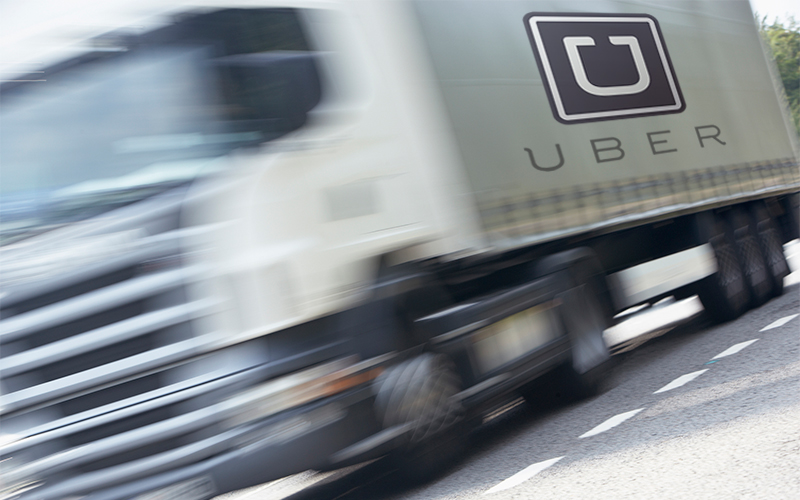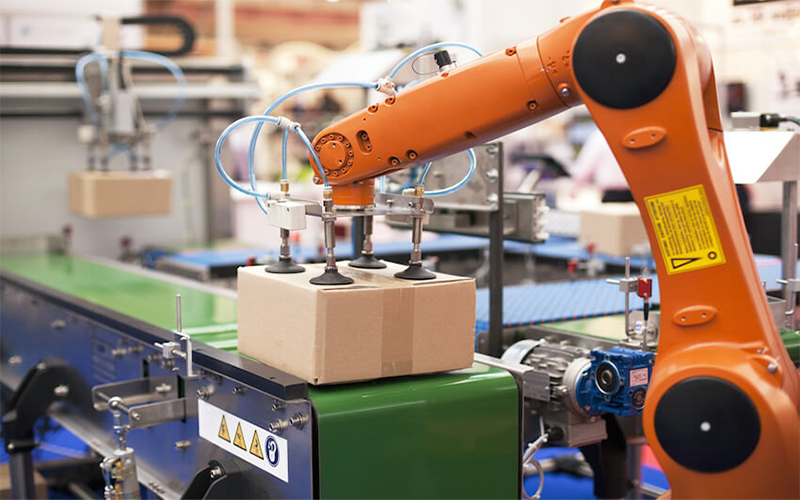While the global logistics business has never taken many cues from Silicon Valley, an array of new technologies is set to significantly alter - and likely disrupt - the $4 trillion sector over the next several years.
Smartphone apps and GPS technology have already removed the boundaries between factories and roads.
Sophisticated tracking software is making it easier and faster to deliver shipments, manage schedules, monitor cargo, plan routes and avoid delays, all in real time.
The result: faster, cheaper and more sustainable circulation of goods.
But there are even more advanced logistics technologies looming just around the corner.
Here’s a look at three that could have a significant impact.
1. “Uber-ization” of Trucking
Moving freight long distances by truck quickly, safely and inexpensively is a lot more complicated than driving a stranger to the airport in a shared car.
But a growing number of trucking companies have begun to experiment with Uber-like apps and services, hoping what’s worked so well for ride-sharing will translate to large-scale commercial shipping.
“Customers expect visibility and control of inventory and transportation in their supply chains. We’re continually on the lookout for new technologies that can give them more control so we both operate more efficiently,” says Juan Perez, the newly named Chief Information Officer at UPS.
New apps and services with names such as Transfix, LaneHoney, DashHaul, and Cargomatic are helping shippers see available trucks nearby and book directly with a click instead of through a broker.
The services, which are tied to online maps that monitor the operator’s GPS position and update the shipper to exact arrival times, eliminate paper, phones, faxes and price haggling.
These on-demand trucking platforms are poised to do to traditional truck brokers what Uber has done to taxi services - bring convenience, automation and price transparency to customers, while revolutionizing a hidebound industry ripe for disruption.
“My goal is to bring transparency to the market and provide a platform where users make the prices,” says Roseanne Stanzione, founder and CEO of LaneHoney, a marketplace for trucks on demand.
Read: Armstrong Highlights the Inaccuracy of the Term “Uber for Trucking”
2. Robotization of the Warehouse
E-commerce has revolutionized shopping and the way purchases are delivered to customers.
But there remains a serious bottleneck in the e-commerce logistics chain: human stock pickers.
Most big Internet commerce companies rely on small armies of stock pickers who walk miles each day through massive warehouses to gather goods for shipping. Amazon alone hires more than 80,000 stock pickers for the Christmas rush, making it a prime target for automation.
Enter the robot stock picker, which is already starting to revolutionize warehouse and logistics operations.
Beginning last summer, more than 15,000 Kiva Systems robots began gliding through 10 of Amazon’s U.S. warehouses, picking up goods and reducing the distance human workers have to walk to find products.
So far, no robot can pick and pack products with the speed and reliability of a human in an unstructured environment.
But the technology is developing quickly. In order to spur the technology, Amazon in 2015 held the first Amazon Picking Challenge, in which 31 robot-designing teams from around the world competed.
A group from the Technical University of Berlin walked away with the $20,000 first prize. The 2016 Amazon Picking Challenge was won by the students of TU Delft in Holland.
In the not-too-distant future, your e-commerce purchase may arrive to you not only faster but also untouched by human hands.
“The state of the art has developed a lot over the last 10 years,” says Joe Romano, an organizer of the Amazon Picking Challenge. “There’s a real need out there for cutting-edge robotics.”
Read: Warehouse Automation as a Strategic Catalyst
3. Augmented Reality and Wearables
The next big advance in logistics tech could be augmented reality: wearable digital systems that promise to reinvent the costly and cumbersome picking process in warehouses.
Many warehouses today still use a paper-based approach to stock picking, which is slow and error-prone.
Augmented reality systems currently being offered by companies such as Knapp, SAP and Ubimax consist of a smart-glasses display, a camera, a wearable PC and a battery pack.
By using the augmented-reality system, workers can see the digital picking list in their field of vision through smart glasses.
With the help of indoor navigation capabilities, they can discern the best route to specific items, significantly reducing travel time by more efficient path planning.
So-called “vision picking” software offers real-time object recognition, barcode reading, and data integration with the warehouse management system to ensure the correct items are being picked.
DHL recently concluded a pilot project that tested smart glasses and augmented reality systems in a warehouse in the Netherlands; the result was a 25 percent efficiency increase during the picking process.
“We believe augmented-reality devices will likely be one day as normal and widespread as smartphones,” says DHL’s Sabine Hartmann.
Read: Wearable Technology in the Warehouse
Source: Reprinted with permission of Longitudes, the UPS blog devoted to the trends shaping the global economy.
Download Related White Papers
Technological Disruption and Innovation in Last-Mile Delivery
Technology is driving a heightened level of innovation in product and service offerings in the last mile parcel delivery market, and is transforming the way delivery providers interact with their customers, this paper examines these technologies and business models. Download Now!
Five Ways to Optimize Your DC For E-Commerce Fulfillment
The rise of e-commerce and multi-channel fulfillment has caused distribution centers to experience ever-growing numbers of stock-keeping units and more inventory turns, up to an average of nine in 2015, and this year, 38 percent of companies plan to handle even more SKUs. Download Now!
The Return-on-Investment of Voice Picking
To produce a solid business case - replete with ROI, internal rate of return, payback period, net present value and similar metrics - one must first quantify the financial benefits that reduce existing hard-dollar costs in labor, operating expenses, materials, inventory and fixed assets. Download Now!
Picking Errors Are Down and Productivity Is Up
In business for over 100 years and responsible for distributing hundreds-of-thousands of perishable and non-perishable food items daily, Ben E. Keith was looking for a better and faster way to service its customers. Download Now!
Article topics
Email Sign Up



























